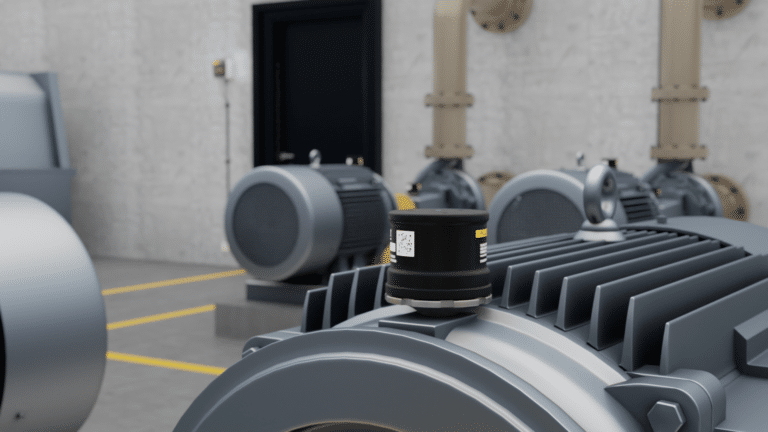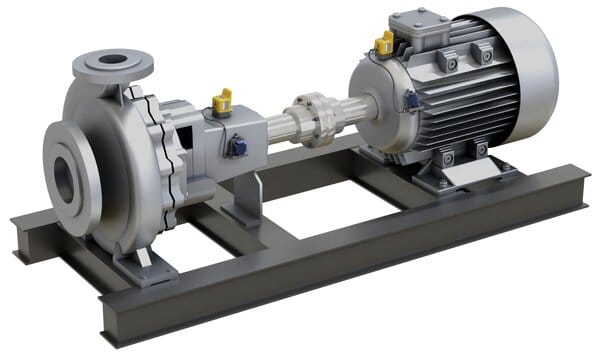
The Fast Fourier Transform, or FFT, is a tool often used in vibration analysis. The FFT uses the vibration data you’re already collecting and reconfigures it to provide valuable new insights into your machine health. When used right, FFT analysis is a key component of any predictive maintenance strategy.
FFT analysis can help you pinpoint machine faults so that you know exactly when your team should perform maintenance. But the FFT is often seen as confusing or overly technical. This article will explain what FFT analysis is, and how it can help you improve your asset performance, reduce downtime, and cut maintenance costs.
What Is the Fast Fourier Transform (FFT) Formula?
Briefly, the Fast Fourier Transform is an algorithm that quickly carries out the Discrete Fourier Transform (DFT) of a sequence of data. It takes data that’s expressed in terms of time, and converts it into detailed data about frequency.
Digital signals (like vibration data) are often collected and recorded as a function of time. For example, a waveform graph of vibration data will indicate exactly when your machine’s peak vibration occurs.
If you study that vibration data, you can get a good sense of your machine’s overall health and even extend asset lifespan. You’ll know how often there are abnormal vibrations, and you can see where in your machine’s work cycle those vibrations are taking place.
However, measuring vibration data in this way does not give you the full picture.
What kinds of vibration is occurring? Where is the fault that’s causing the excess vibration? Is the defect in your bearings or in the shaft? FFT analysis can answer these questions.
Understanding Waveform Analysis
Waveform analysis is a graphical representation of a wave – a sound wave, a seismic wave, or any other kind of wave.
Waveform charts illustrate the changing amplitude of a particular wave over a period of time. You can use time waveforms to look at the overall vibration of a particular asset and to get a sense of the overall health of that asset.
What FFT Does to Waveform Data
FFT takes time-bound data and converts it into frequency data. Instead of showing you when abnormal vibrations occur, FFT analysis breaks down each vibration into its component frequencies. FFT analysis looks for the dominant frequency, or frequencies; it shows you whether the vibration is occurring at a low frequency, a high frequency, or somewhere in between.
Why does this matter? Each level of frequency indicates a different source of trouble. FFT analysis shows you where the trouble-spots on your assets are, so that you can get in and fix them in plenty of time.
How FFTs Are Used in Vibration Analysis
Vibration analysis looks at a few key measurements to determine machine health. Typically, technicians analyze vibration frequency, velocity, and acceleration.
It’s easy enough to measure that raw vibration data to check on your machinery’s vibration signature. But FFT analysis goes a step further, opening up the raw data.
Changes in vibration frequencies can point to problems like imbalance. For example, some rotating machinery shifts to a lower vibration frequency when its balance is thrown off. This is a clear warning signal that the machine needs maintaining.
Changes in the dominant frequency can also pinpoint problems in shaft alignment or gearbox problems. FFT analysis can also highlight issues with wear and tear on rotating parts, or imperfectly formed parts.
Key Vibration Analysis Terms
Vibration analysis uses a lot of terminology. It’s useful to know what the key terms mean! Here are some of the main terms you’ll hear for FFT and vibration analysis.
Time waveform: the raw vibration data captured by a vibration monitor, graphed in terms of amplitude versus time.
Frequency spectrum: a simplified graph showing amplitude and frequency. The frequency spectrum is calculated based on the raw time waveform.
Harmonics: The echoes created by strong, evenly-spaced vibration peaks. It is normal for rotating machines to create harmonics.
Common machine faults: The most commonly occurring sources of machine failure in rotating machinery. Some of the most common faults are misalignment, imbalance, looseness, and bearing failure.
Displacement: The distance a vibrating object moves from its starting point. Displacement is best-suited to measuring lower frequencies.
Velocity: The distance that a vibrating object moves over a particular time. Velocity is best-suited for measuring mid-level frequencies.
Acceleration: the rate at which velocity changes over time. Acceleration is best-suited to measuring very high frequencies.
Choosing the Right Vibration Analysis Solution
Which kind of vibration analysis is right for your operation? It can be tough to decide whether you’re better off with FFT analysis or time waveform analysis. The truth is, there are plenty of benefits to both.
Fortunately, you don’t need to choose. The right vibration monitoring program can provide you with both. The right tools will give you accurate, easy-to-use data and analytical tools to help you make the most of that data.
The more you know about your machinery’s vibration patterns, the better you’ll be able to maintain your assets. And that means increased uptime and greater productivity for your whole operation.






